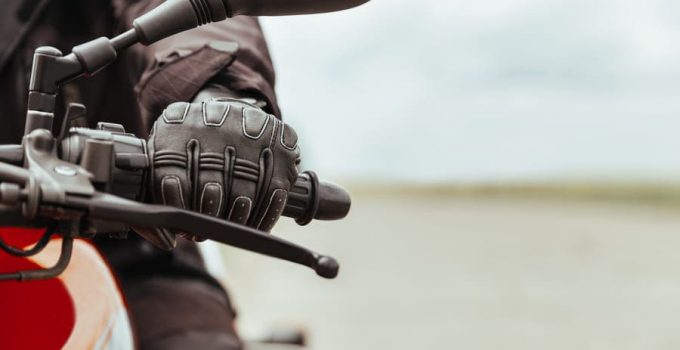
Your hands are exposed to many different influences and dangers when riding a motorcycle, which is why the right gloves are a very important part of the required protective equipment. They not only protect your bones and joints in the event of a fall, but also offer effective protection against the cold and wet. Because especially in cold temperatures and rain there is a risk that your hands will become sluggish and numb. And that can have fatal consequences on a motorcycle, since the brakes, clutch and accelerator are operated with the hands. But with the large selection of different motorcycle gloves for women and men, it is often not that easy to find the right ones for you and your needs. With this article we would like to help you with your decision-making by introducing you to the different types, materials and properties in more detail.
Contents
Why are motorcycle gloves so important?
In contrast to wearing a motorcycle helmet, there are no regulations in the German road traffic regulations regarding other mandatory protective clothing such as trousers, jackets or gloves. However, it is in your interest as a motorcyclist to voluntarily wear suitable gloves while driving. And not just because in an accident, you may lose your right to compensation if you sustain an injury due to a lack of protective gear.
We humans generally tend to instinctively stretch out our arms to catch ourselves with our hands when we fall. However, this can lead to serious injuries, especially at high speeds. However, even at low speeds, you can suffer abrasions and other injuries if you have an accident or fall. Therefore, you should never be on the road without suitable motorcycle gloves. If you have another passenger with you, the same applies as for you as a driver.
However, gloves not only protect against injuries, they also protect your hands from wet and cold. Because this would make your hands sluggish and numb, which would impair your fine motor skills and you would no longer be able to optimally operate the throttle, brake and clutch levers. Incidentally, this applies not only to winter, but also in summer when it rains. Gloves also prevent pain from contact with flying stones and insects. To avoid the resulting distraction while driving, gloves are essential. But which ones are right for you?
What_different_types are there?
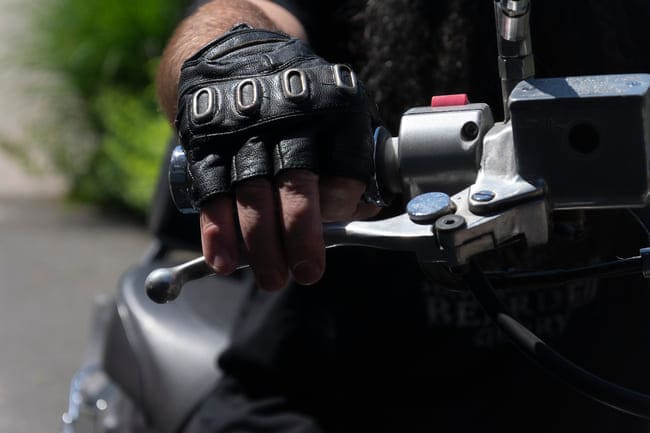
Before you start looking for gloves, you should first make it clear what you want to use them for. Because there is not only a distinction between motorcycle gloves for summer and for winter, but also between the different areas of application. The gloves can be divided into the following four categories:
- Touring gloves: These gloves are usually made of modern textiles and provide ideal protection against moisture, extreme climatic conditions and falls. These mostly waterproof motorcycle gloves are slightly more expensive, but they are extremely comfortable, allow effortless operation of the throttle, clutch and brake levers and are ideal for everyday use.
- Chopper gloves: These fingerless motorcycle gloves are primarily a fashion accessory, but offer little protection from rain, moisture or injury. However, in winter they can be worn as an additional insert in the gloves to warm the hands even better.
- Motocross or off-road gloves:These thin motorcycle gloves are ideal for off-road riding with an enduro or motocross bike. They offer an excellent grip, which allows precise operation of the accelerator, clutch and brake. When buying these breathable gloves, make sure that they fit perfectly so that they do not wrinkle, which can cause blisters and pressure points. However, these gloves are often not waterproof, do not have a climate membrane and are at most equipped with thin plastic protectors. As a result, they do not protect particularly well against moisture, rain and falls on asphalt, which is why they are also significantly cheaper than others.
- Sports gloves: This is the safest but also the most expensive type of glove. These motorcycle gloves are equipped with protectors, Velcro straps for secure attachment to the wrist and long cuffs. Their special cut and shape offer additional protection. Since they are not lined, an excellent grip is made possible. However, they are not so well suited for longer journeys because they are uncomfortable in the long run.
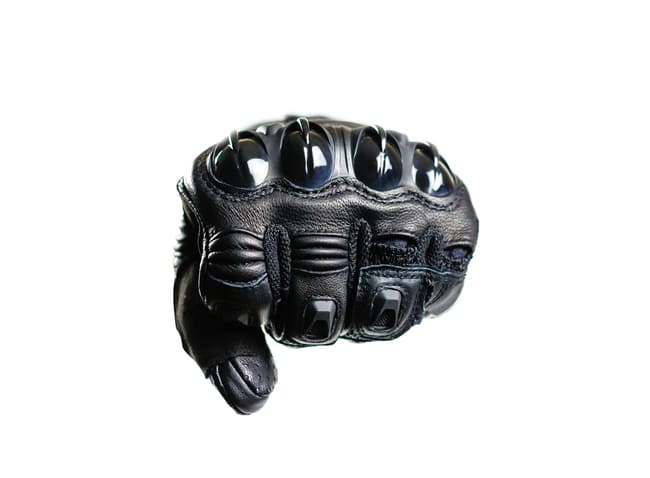
Leather or textile gloves – Which material is better?
There is no general answer to this question, since both materials have different advantages. Therefore, it always depends on your personal preferences and needs which material is more suitable for you. The advantages of leather motorcycle gloves are the following:
- + Extremely abrasion-resistant
- + Look good
- + Easily washable
- + Long service life
- + Offer optimal protection through perfectly fitting protectors
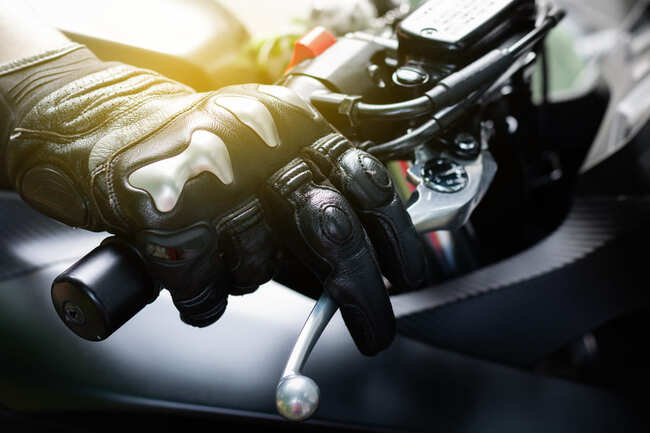
However, they require a certain amount of care, are not breathable and very warm at high temperatures. Textile gloves, on the other hand, have the following advantages:
- + Very versatile
- + Customizable
- + Suitable for everyday use
- +Breathable
- + Partly machine washable
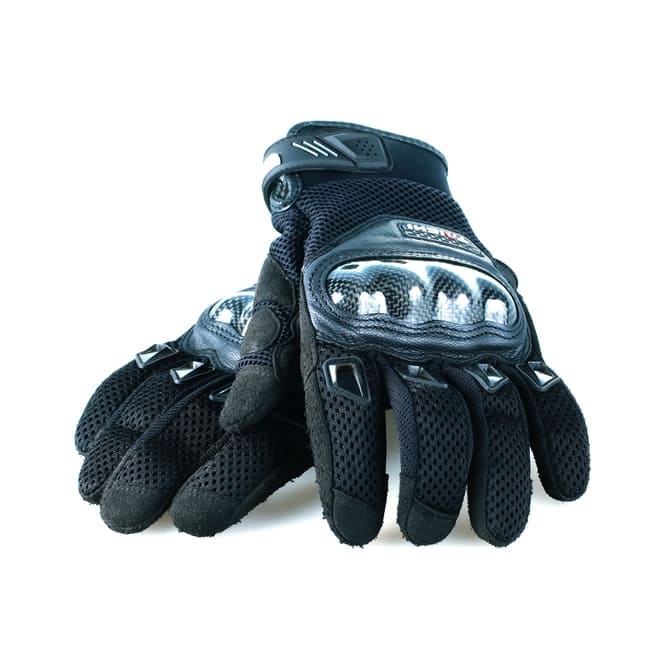
But their protectors slip easily, they have a shorter lifespan and are not as abrasion-resistant as leather gloves. In summary, it can therefore be said that leather gloves offer greater protection, while textile gloves are more versatile and, especially in warm temperatures, impress with their breathability. The ideal solution is often a glove with a combination of leather and textile, which combines the advantages of both materials.
What properties should good motorcycle gloves have?
Apart from the area of application or your driving style (sporty, off-road or in normal traffic), the weather conditions and your need for safety are also decisive for choosing the right gloves. If you also ride a motorcycle in the cold season, you should buy warm winter gloves, while breathable motorcycle gloves are more suitable for the summer. If you attach great importance to safety, you should make sure that your gloves are made entirely or partially of abrasion-resistant leather. The following properties are also important for a purchase decision:
- Good grip: Particularly important for a sporty driving style or on racetracks.
- Correct fit: They should be tight for good blood circulation and avoidance of uncomfortable pressure points, but not pinching and no wrinkles throw.
- Rubber visor wiper: On one Fingers incorporated to remove rain from helmet visor.
- Ventilation: Particularly important for summer gloves.
- Membrane: Ensures breathability and waterproofness.
- Protectors: Attached to the palms, knuckles and ball of the hand of the motorcycle gloves, they are often made of Kevlar, carbon or plastic.
- Gauntlets: Should be long and roomy enough to fit over the sleeve of a motorcycle jacket for optimal protection.
- Wrist closure: Prevents the glove from slipping in the event of a fall.
- Touchscreen compatibility: Very helpful if you use your smartphone as a navigation device.
How can I determine the correct size for my motorcycle gloves?
Motorcycle gloves must be neither too short nor too long in order to fulfill their optimal protective function. It is therefore very important to try them on before you buy them. This is particularly important because each manufacturer sizes their gloves differently. To get a first clue, you can measure the circumference of your hand and then compare it with the information in the manufacturer's size chart. To do this, stretch out your hand flat and place a tape measure around the widest part of your hand to measure the circumference. Note that women's motorcycle gloves are smaller than men's motorcycle gloves. When trying them on, you should pay attention to the following:
- Finger length: The fingers should still have a bit of air at the top and should not touch.
- Gauntlets: They should be long and wide enough to fit over the sleeves of your motorcycle jacket.
- Protectors: These have to be in exactly the right places, fit snugly and not slip without pinching.
- Width of the hand: Gloves must not be too narrow or too wide, either.
Conclusion
Even if it is not mandatory in The United Kingdom, wearing suitable motorcycle gloves is recommended if only for your own safety. Well-fitting gloves not only protect your hands from injuries, but also from the cold and wet. There are even heated motorcycle gloves for the winter, which are particularly useful if you don't have a heated handlebar and tend to get cold hands quickly despite wearing gloves. Before you decide on a pair, you should think carefully about the areas of application you want to use them for and which properties are particularly important to you. Finally, be sure to try the gloves on to make sure they fit the best.
